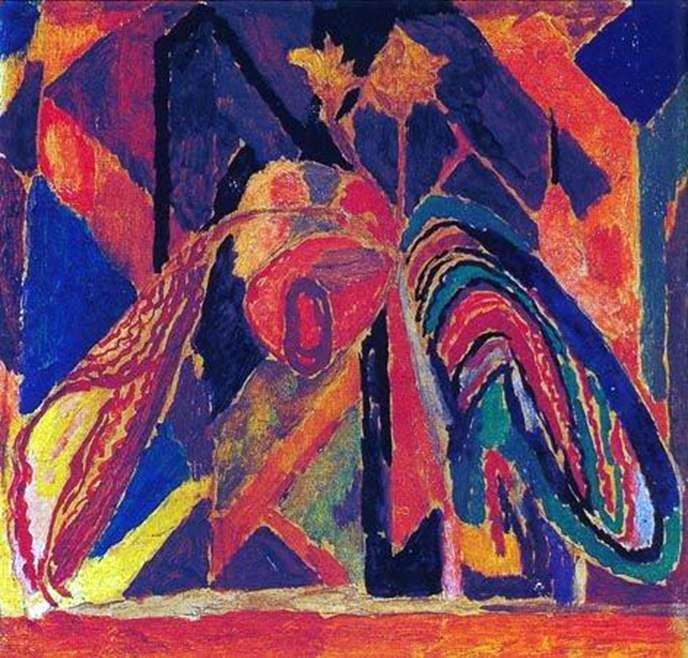
In the still life reflected the entire evolution of the style of Vanessa Bell. Her early works in this genre are quite traditional both from the point of view of material filling, and in terms of composition and style. Bell writes books, caskets, vases with flowers, fruits and other everyday items in the “natural environment.” So, in the still-life “Apples: house 46 on Gordon Square” the background is the lattice of the balcony and a piece of the street. In the 1910s, only objects depicted in the still life remain traditional. Bell, adopting the concept of the primacy of form in painting, tries to free himself from the old ideas, which seemed already dilapidated, about the symbolic meaning of objects in a still-life.
The artist focused exclusively on the “visibility” of things, their tangible external form. With formalism, the search for decorative still-life possibilities was inseparably linked. An example of such searches can serve as a picture “Paper flowers in a bottle,” written by Vanessa Bell in 1914. Artificial flowers are depicted here on an abstract background, the prototype of which was a catchy pattern designed by the artist herself for the fabric. Much more often, however, Bell wrote her still-lifes on an even background, allowing “to push” the items to the foreground, bringing them closer to the viewer. So written, for example, is already familiar to the reader “Still life on the corner of the mantelpiece.”
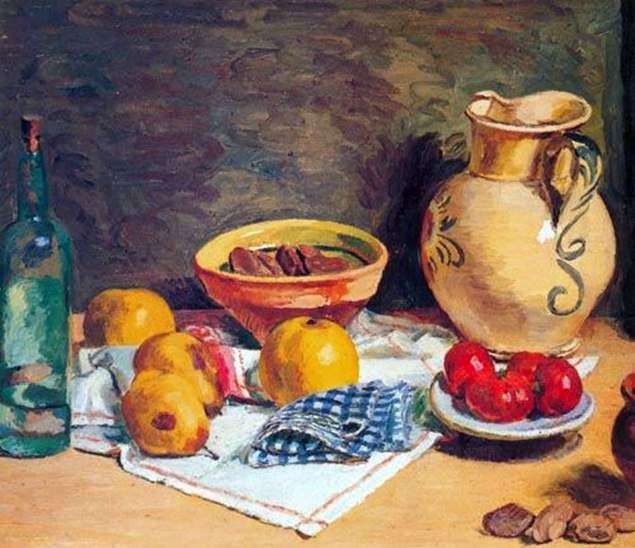 Still Life with a Jug by Vanessa Bell
Still Life with a Jug by Vanessa Bell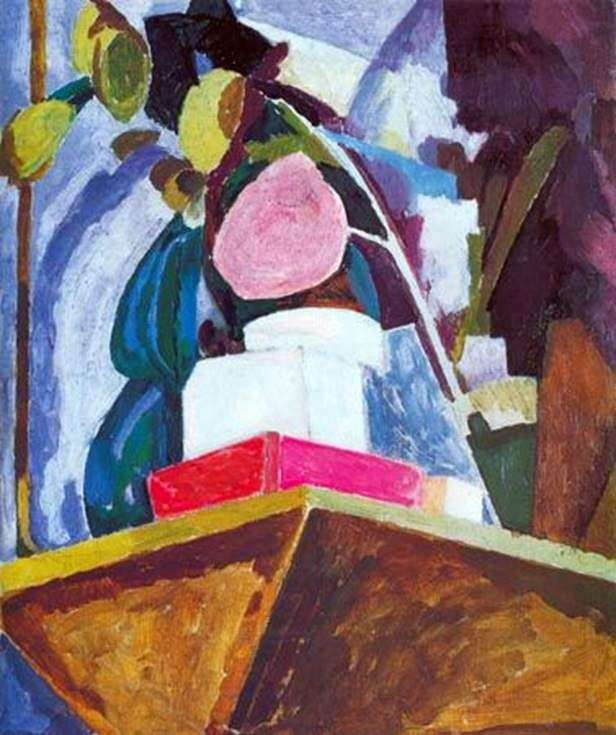 Still life on the corner of the mantelpiece by Vanessa Bell
Still life on the corner of the mantelpiece by Vanessa Bell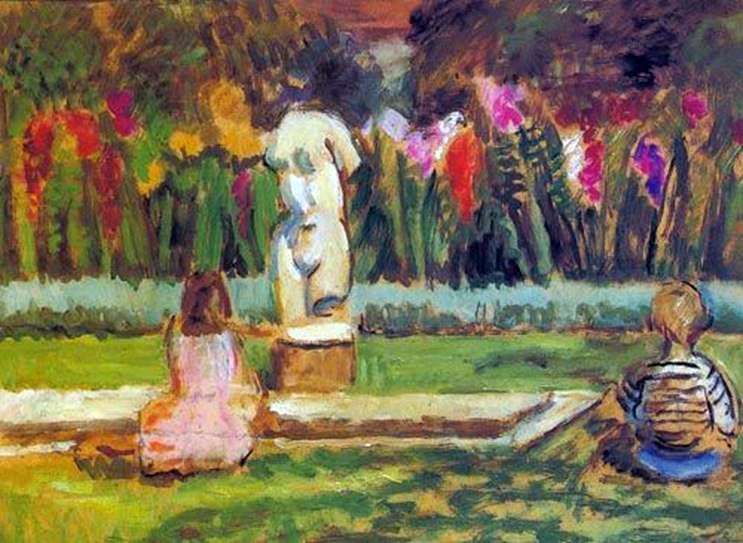 Henrietta and Julian at the garden pond in Charleston by Vanessa Bell
Henrietta and Julian at the garden pond in Charleston by Vanessa Bell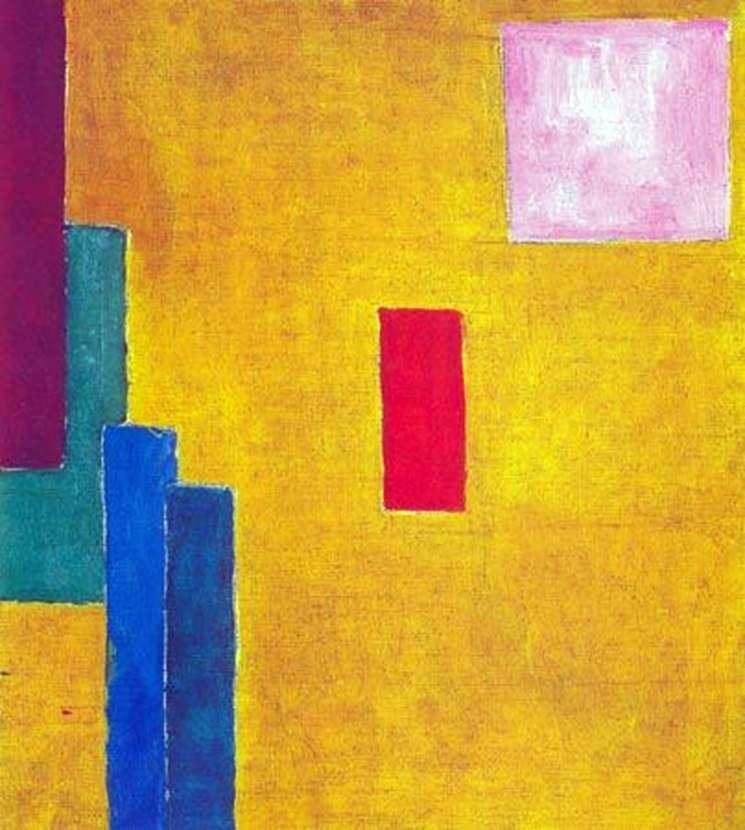 Abstractions by Vanessa Bell
Abstractions by Vanessa Bell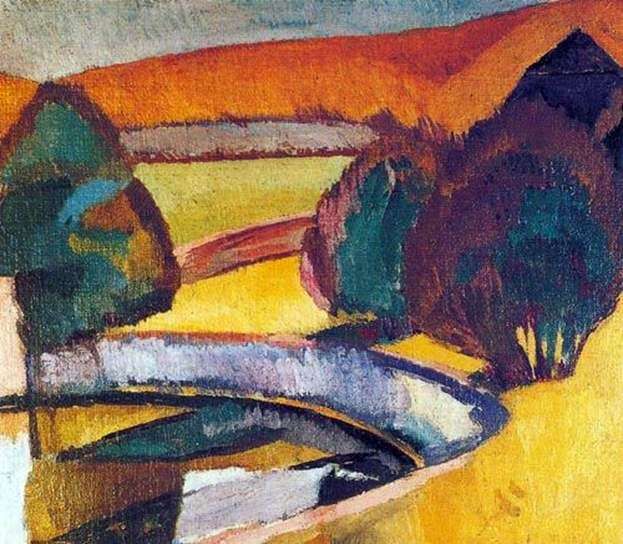 Pond in Charleston by Vanessa Bell
Pond in Charleston by Vanessa Bell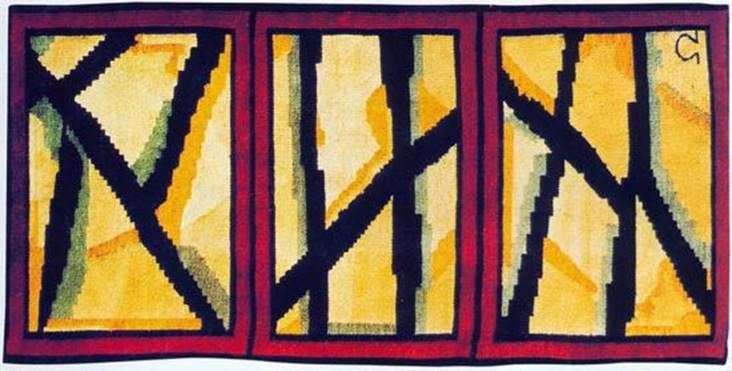 Workshops “Omega” by Vanessa Bell
Workshops “Omega” by Vanessa Bell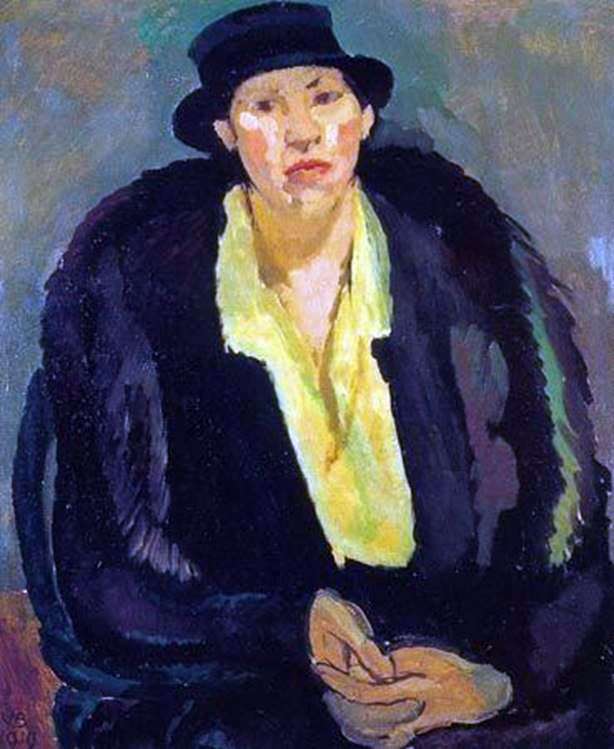 Woman in Furs by Vanessa Bell
Woman in Furs by Vanessa Bell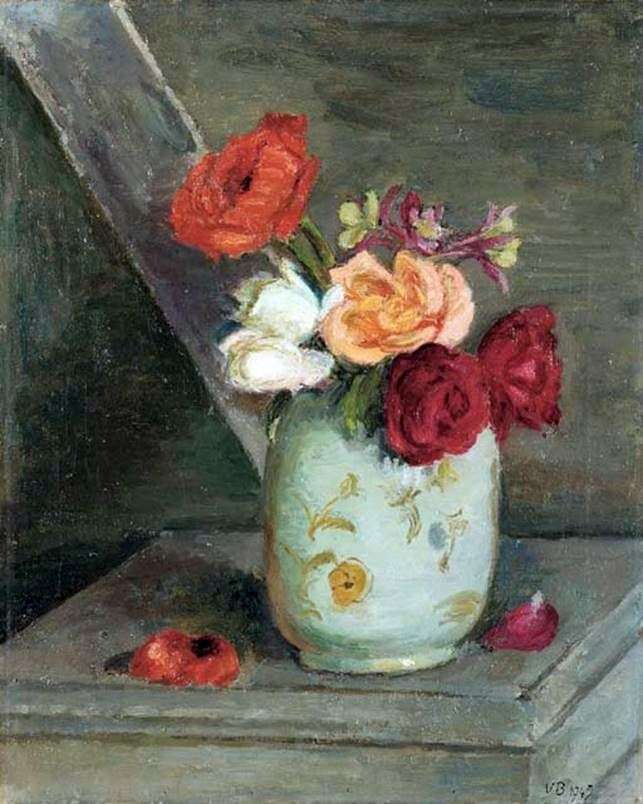 Roses in a Chinese Vase by Vanessa Bell
Roses in a Chinese Vase by Vanessa Bell